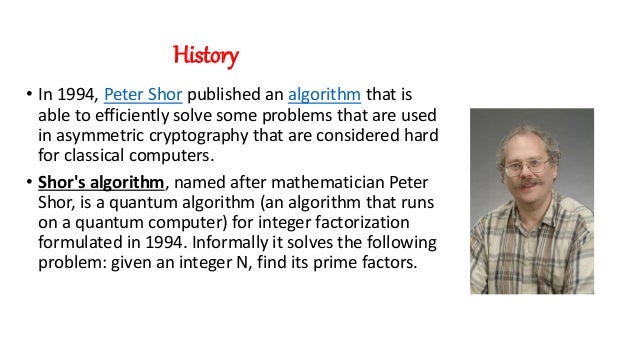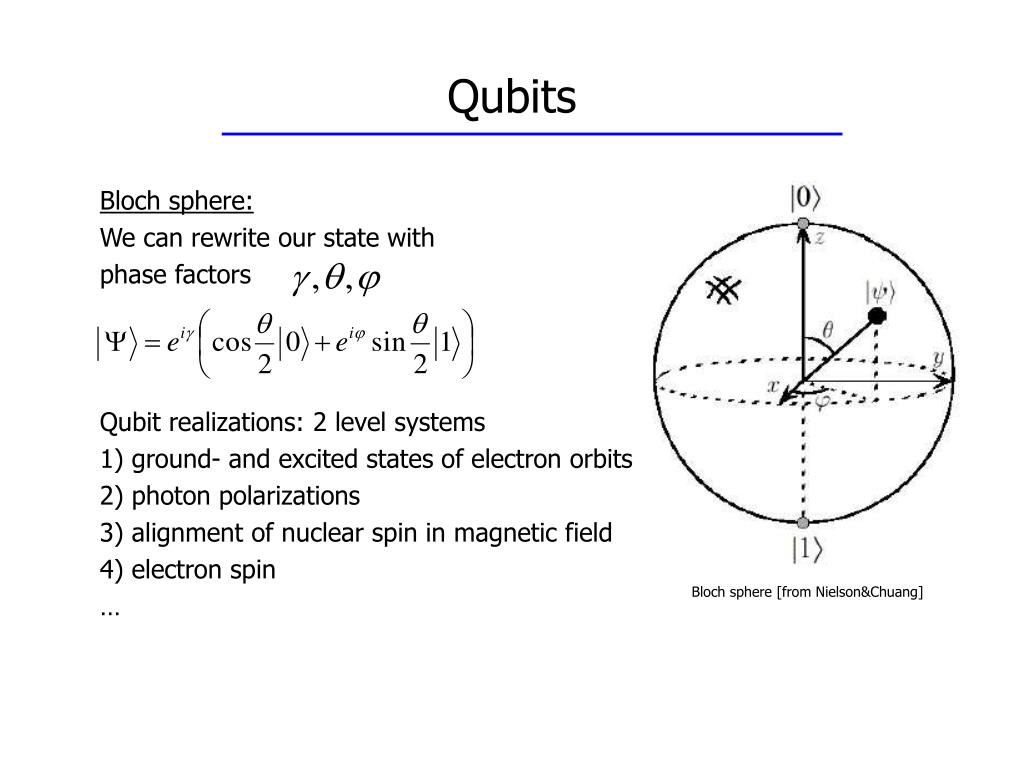
In this paper, we propose a class of 2-generator quasi-cyclic codes and study their applications in the construction of quantum codes over small fields. One of the main objectives of quantum error-correction theory is to construct quantum codes with optimal parameters and properties.
#Peter shor quantum error correction code#
We complement our results by realizing the developed scheme for a three-qubit code using a cloud-based quantum processor and the five-qubit code using the state-vector simulator. The analysis of noise levels for which the scheme could show improvements in the fidelity of a stored logical state in the three- and five-qubit cases is provided. We developed efficient decoding procedures for repetition codes and the five-qubit code using a minimum weight-perfect matching approach to account for the specific order of measurements in our scheme. For three- and five-qubit codes suggested scheme has the property that it uses only native two-qubit CNS (CNOT-SWAP) gates, which potentially reduces the amount of non-correctable errors due to the shorter gate time. We propose an implementation for syndrome-measurement circuits for codes from the class and illustrate its workings for cases of three-, five-, and nine-qubits stabilizer code schemes. We describe a class of "neighboring-blocks" stabilizer quantum error correction codes and demonstrate that such class of codes can be implemented in a resource-efficient manner using a single ancilla and circular near-neighbor qubit connectivity. However, for noisy optimization objectives, adaptive sequential decision making approaches such as reinforcement learning have a cost advantage compared to standard control algorithms and, in contrast, the infidelities obtained are more consistent with higher RIM values for low noise levels. Although high fidelity and robustness are often conflicting objectives, some high fidelity, robust controllers can usually be found, irrespective of the choice of the quantum control algorithm. For algorithm comparisons, stochastic and non-stochastic optimization objectives are considered, with the goal of effective RIM optimization in the latter. The robustness and fidelity of individual control solutions as well as the expected robustness and fidelity of controllers found by different popular quantum control algorithms are characterized.

The utility of the RIM and ARIM is demonstrated by considering the problem of robust control of spin- 12 networks using energy landscape shaping subject to Hamiltonian uncertainty. Based on the RIM$_p$, an algorithmic robustness-infidelity measure (ARIM) is developed to quantify the expected robustness and fidelity of controllers found by a control algorithm. Using a metrization argument, we justify why RIM$_1$ (the average infidelity) suffices as a practical robustness measure.

The RIM$_p$ is the p-th root of the p-th raw moment of the infidelity distribution. The robustness-infidelity measure (RIM$_p$) is introduced to statistically quantify the robustness and fidelity of a controller as the p-order Wasserstein distance between the fidelity distribution of the controller under any uncertainty and an ideal fidelity distribution.

Robustness of quantum operations or controls is important to build reliable quantum devices. Uncertainties that require fault-tolerance in quantum devices have two flavors: (a) interaction with the environment that leads to non-unitary dynamics (b) inaccuracies in the control model representing a specific physical implementation that affect the evolution but do not cause nonunitary evolution.

Broadly, there are three proposed ways to deal with noise and errors and achieve fault-tolerance: (1) via error correction protocols, e.g., Shor codes and syndrome measurements (2) using error mitigation schemes, e.g., reversing noisy dynamics, active variational noise minimization, or parametric modelling of architecture defects in trapped qubits (3) robust solutions engineering, e.g., landscape shaping of the quantum control optimization problem in search of noise-free regions, decoherence-free subspaces, or noise spectral density based filter functions. Fault-tolerance is crucial for quantum technology and presents a particular challenge for Noisy Intermediate-Scale Quantum (NISQ) devices.


 0 kommentar(er)
0 kommentar(er)
